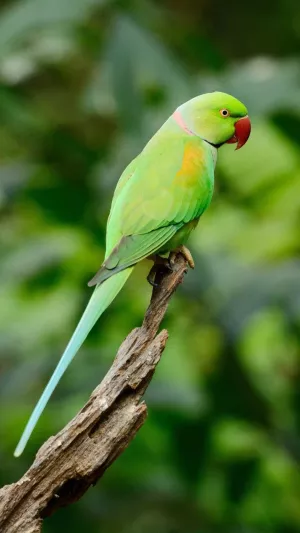In the pet world, in addition to cats and dogs, there is another animal that people love. They are birds. Like cats and dogs, birds also have various species, such as finches, parrots, and thrushes. Among so many birds raised by humans, parrots can be said to be a unique "mimic master", and they can imitate a variety of sounds, surprising people.
Parrots' ability to imitate human speech is nothing new, so how do they do it? In fact, the secret lies in its special physiological structure: the syrinx and the tongue.
Unlike the vocal cords of humans, parrots have vocal organs called chirps. It is located at the junction of the trachea and the bronchi, and is composed of the lowest 3-6 trachea and its adjacent left and right bronchi. In the structure of the entire syrinx, it is also very similar to the structure of the human vocal cords, except that the human vocal cords are 20 cm from the throat to the end of the tongue, at a right angle. The parrot's syrinx is 15 cm from the tongue, which is an obtuse angle that is almost right. And this angle is the key to determining the syllable and tone of pronunciation. The closer to the right angle, the stronger the sense of syllable and tone of the pronunciation. Therefore, parrots can produce cadence and syllables like humans.
At the same time, the muscles of the parrot's neck are firm, which facilitates the control of the vibration of the vocal cords, so that it can imitate a variety of sounds. The most important thing for a parrot's vocalization is to rely on people's daily training, imitating various sounds, and long-term accumulated training will make it generate memory.
Also, parrots are social animals. They like to imitate the sounds of other animals because they want to be friendly with other animals. Parrots in the wild can enjoy the feeling of being "surrounded" by imitating the sounds of other animals. Parrots that are pets learn to speak to humans, which means they want to interact more with you. Depending on the size of the parrot, the difficulty level of parrot learning to speak is also different. Generally speaking, the larger the parrot, the easier it is to learn to speak, and the easier it is to train them to speak.
Although parrots are born with the ability to imitate sounds, there are many species of parrots. Depending on the species of parrot, their natural ability to speak varies. There are roughly nine common species of parrots in the world that can be taught to speak, and their ability to imitate sounds varies from breed to breed. Three of them are described below.
1. Amazon Parrot
The species with the strongest talking ability is the Amazon parrot. Not only are they easy to learn to speak, but they also sound very close to the human voice. The plumage of Amazon parrots is mostly green. The irises of the eyes are orange, and they are yellow on the crown, between the beaks, and on the thighs, and occasionally around the eyes.
2. Sunflower Parrot
The sunflower parrot is named for its sunflower-shaped crown and is mainly found in Australia. This breed of parrot has a well-behaved and intelligent personality. After being with humans for a period of time, it will develop deep feelings for humans and can talk to people. Usually mainly eat grains, fresh fruits and other foods.
3. Grey Parrot
Grey parrots are one of the larger parrots that like to climb but are not good at flying. This kind of parrot has a strong speaking ability, and can communicate with humans after professional training. It is known for its ability to imitate human language and is one of the more popular pet birds.





